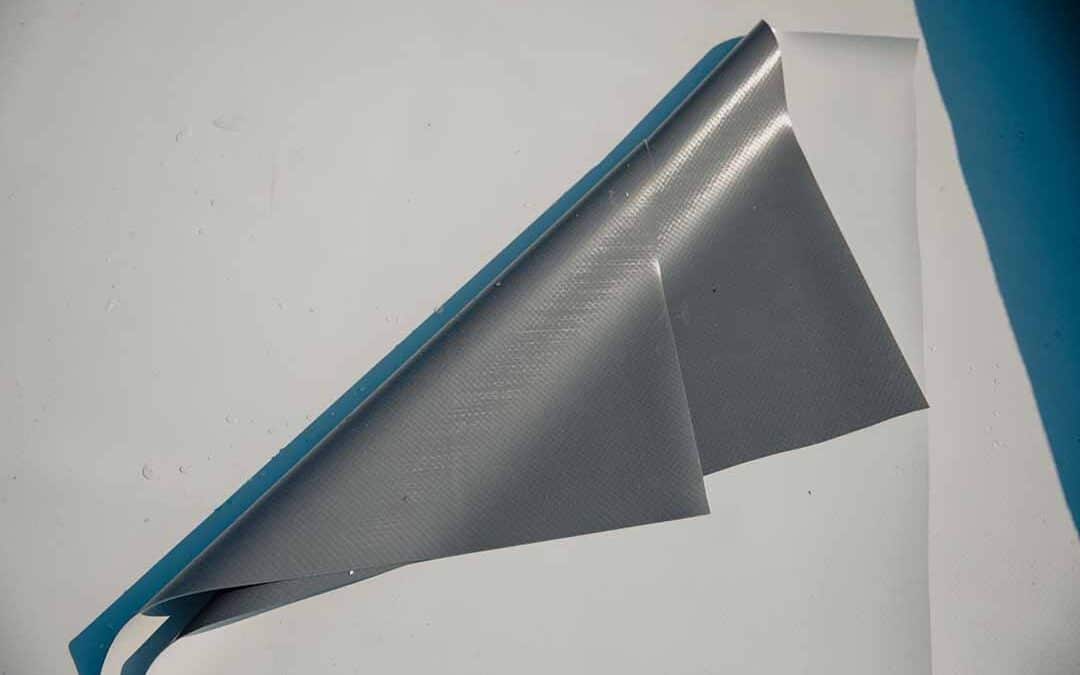PVC Roofing is a resilient and reliable choice for many buildings across the nation, especially those gracing the beautiful landscapes of Minnesota. PVC, short for polyvinyl chloride, is a standout in the vast universe of roofing materials. Its properties make it an outstanding choice, particularly for flat or low-slope roofs. One might wonder how this plastic became a star in the roofing industry. As we explore further, we’ll uncover the features that make PVC roofing not just a viable, but an exceptional choice for many commercial buildings.
In this blog, we’ll be exploring the difference between PVC and PVC-KEE roofing, its practical applications, and numerous benefits about this adaptable material.
PVC VS. PVC-KEE Roofing
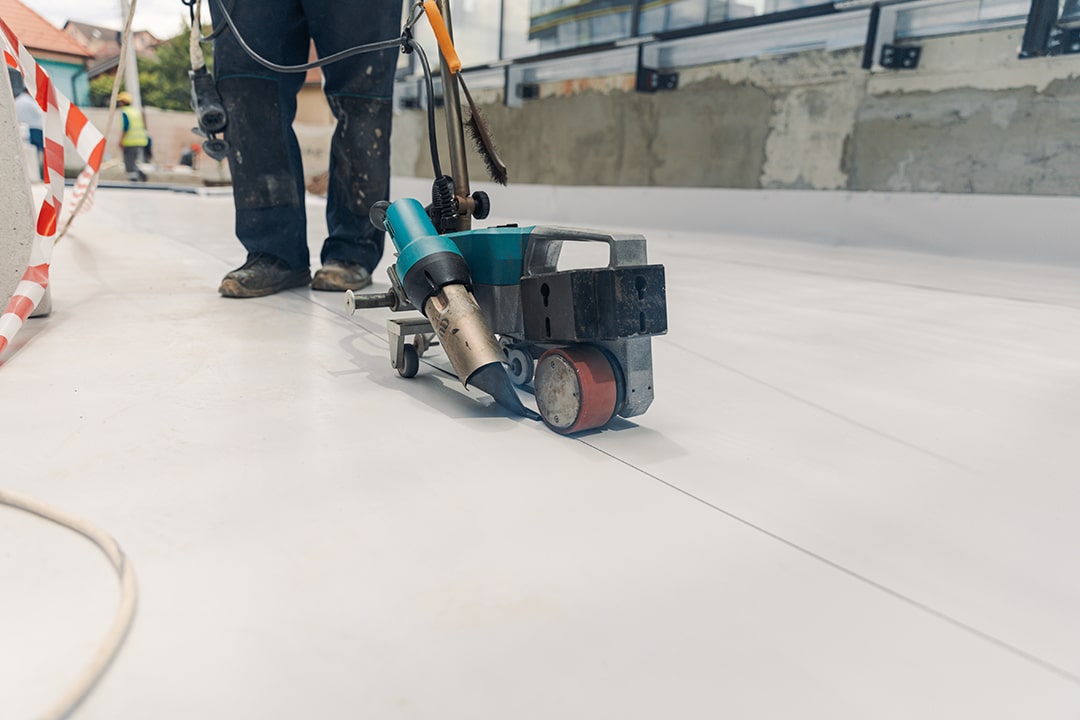
What exactly is the difference between PVC and PVC-KEE roofing? While they may sound similar, these are distinct materials, each with its unique benefits and considerations. Both PVC (polyvinyl chloride) and PVC-KEE (polyvinyl chloride – ketone ethylene ester) are thermoplastic materials used in the roofing industry, known for their durability, flexibility, and longevity. They both have a strong track record, especially for flat or low-slope roofs.
PVC Roofing is an established product in the roofing industry, recognized for its strength and versatility. One of the most significant advantages of PVC roofing is its resistance to various elements including fire, wind, and chemicals. PVC also has a high tolerance for water, which can be crucial in areas where rain, snow, and standing water are prevalent. PVC roofs also exhibit excellent flexibility and strength, allowing them to withstand fluctuations in temperature and structural movements. They are heat-welded at the seams, creating a bond often stronger than the material itself, leading to a long-lasting, water-tight seal.
However, over time, and under specific conditions, traditional PVC roofs can lose some of their flexibility due to plasticizer migration, potentially leading to shrinkage and other mechanical issues.
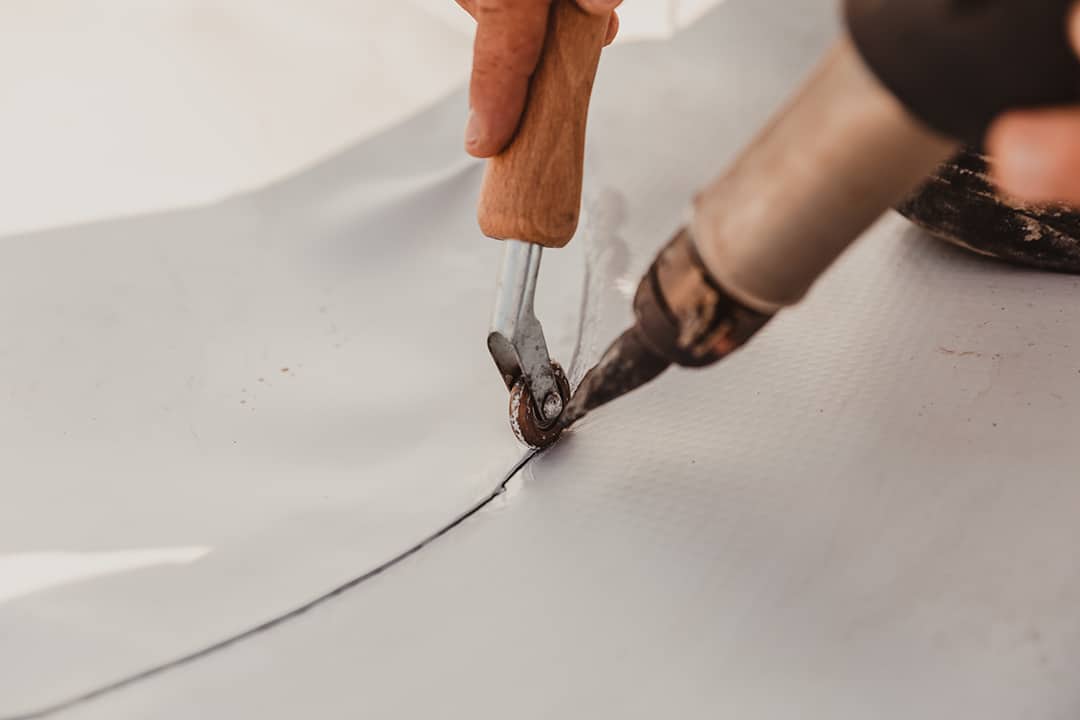
This is where PVC-KEE roofing comes into the picture. KEE stands for Ketone Ethylene Ester, a high-molecular substance that when added to the PVC, enhances its performance and durability. PVC-KEE roofing retains all the beneficial properties of traditional PVC, but with the addition of KEE, the material offers improved resistance to weathering, chemicals, and UV radiation. The plasticizers in KEE have a higher molecular weight, which slows the rate of migration and helps the roofing maintain its flexibility and durability over time.
Moreover, PVC-KEE roofing materials tend to have a higher minimum thickness, offering increased puncture resistance and overall durability compared to standard PVC roofing. This could be particularly beneficial in areas where roofs might be exposed to heavy food traffic or harsh weather conditions.
PVC and PVC-KEE Roofing Applications
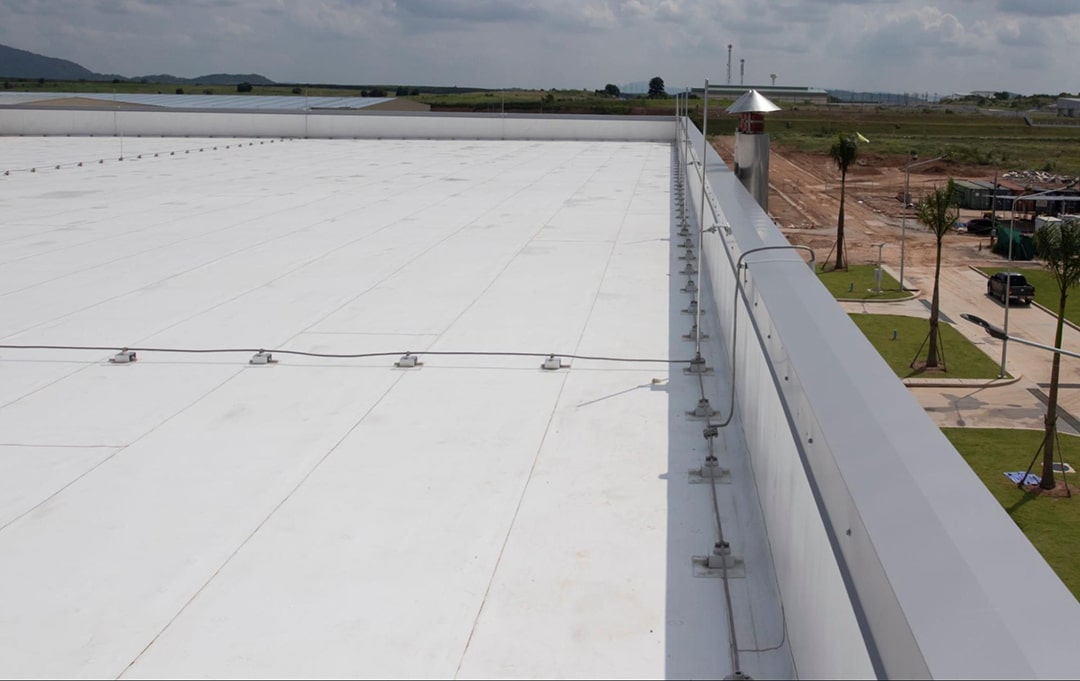
Both PVC and PVC-KEE roofing have earned a considerable reputation in the roofing industry, but how do they stack up when applied to different commercial buildings? PVC roofing, with its robustness, versatility, and enduring nature, has long held a steady position in the commercial roofing industry.
Commercial kitchens, such as restaurants, often release oils and fats through their ventilation systems. These can be harmful to many roofing materials. PVC, known for its resistance to chemicals, stands up well to these challenges, making it a top choice for such buildings.
Many commercial buildings house various equipment on their rooftops, like HVAC systems, that require routine maintenance. PVC’s remarkable puncture resistance and strength make it excellent choice for these high-traffic scenarios.
A number of PVC products can be recycled, positioning PVC roofing as a viable option for green building projects seeking certifications like LEED (Leadership in Energy and Environmental Design).
PVC-KEE roofing takes all the benefits of PVC and enhances them, delivering an even higher performance and lifespan. This makes it a contender for more demanding commercial environment. If your commercial property is situated in an area receiving high sun exposure, PVC-KEE, with its superior UV resistance can provide added protection, maintaining your roof’s integrity for longer.
For locations like Minnesota, known for its heavy snowfall and gutsy winds, a roofing material that can withstand such extreme weather is necessary. PVC-KEE retains its flexibility and durability over time, making it an ideal selection.
Some industrial settings expose roofs to aggressive chemicals and harsh conditions. PVC-KEE, with its heightened chemical resistance, steps in, offering a dependable roofing solution.
Both PVC and PVC-KEE roofing materials present strong solutions for commercial roofing needs. While they might involve a higher initial cost compared to other materials, their durability, lifespan, and minimal maintenance requirements could translate to cost-efficiency over the long haul.
PVC and PVC-KEE Roofing Benefits
Minnesota experiences extreme weather conditions, with cold winters, heavy snowfall, and temperature fluctuations. PVC and PVC-KEE roofing membranes are well-suited for such climates due to their excellent durability and weather resistance. They can withstand the stresses of freeze-thaw cycles without cracking or deteriorating, ensuring long-lasting protection for commercial buildings. They also have good snow load capacities, reducing the risk of structural damage or collapse.
PVC roofing membranes are available in highly reflective options, known as “cool roofs”. These reflective surfaces help to reflect sunlight and heat away from the building, reducing the cooling load on air conditioning systems during hot summer months. This energy efficiency can lead to lower utility bills and a reduced carbon footprint, promoting sustainability.
The extreme weather in Minnesota can take a toll on roofing materials, making low-maintenance solutions highly desirable. PVC and PVC-KEE roofing membranes require minimal maintenance throughout their lifespan. Regular inspections and minor repairs, if needed, are usually sufficient to keep the roof in excellent condition.
PVC-KEE roofing, with its enhanced chemical resistance due to the KEE component, is particularly beneficial for commercial buildings in industrial or chemical-heavy areas. It can withstand exposure to various chemicals without deteriorating, making it an ideal choice for certain industries.
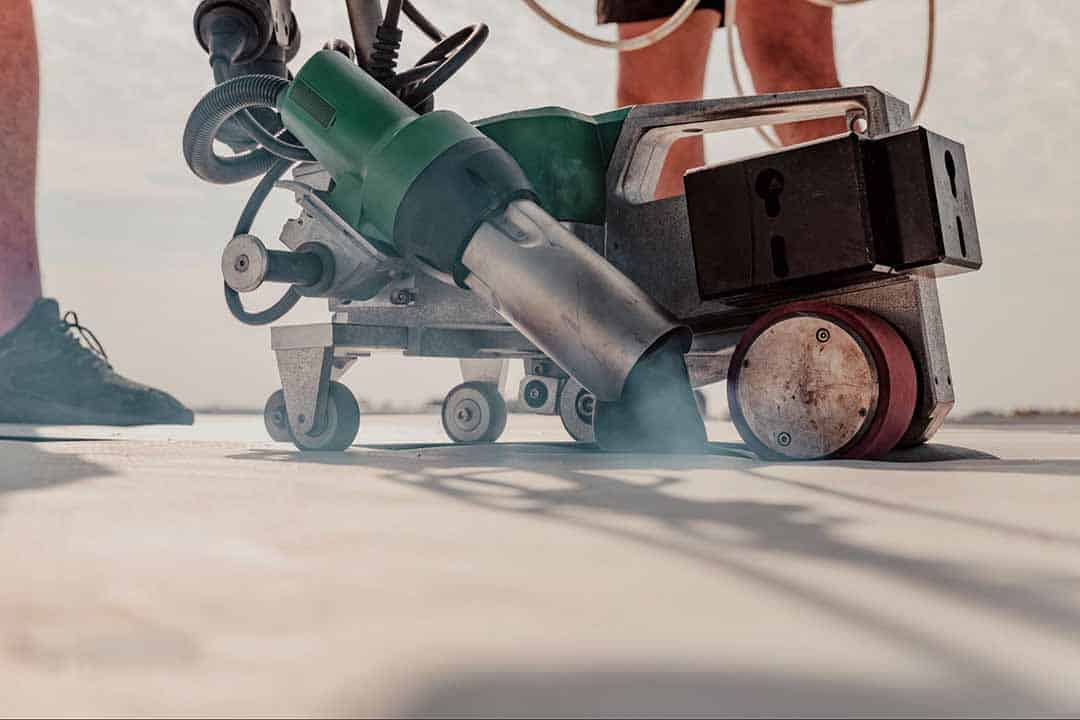
PVC roofing also allows for hot-air welded seams, creating a continuous, watertight bond between the sheets. This installation method enhances the roof’s overall integrity and reduces the risks of leaks. Similarly, PVC-KEE roofing also benefits from hot-air welded seams, providing strong and reliable adhesion.
Investing in durable roofing system is crucial for commercial property owners in Minnesota, as the harsh climate can wear down less robust materials over time. Both PVC and PVC-KEE roofing systems have long lifespans, ranging from 20 to 30 years or more when properly installed and maintained. This longevity translates to cost savings over the years since the roof will require fewer replacements.
In conclusion, PVC roofing and PVC-KEE roofing are outstanding choices for commercial buildings, offering durability, weather resistance, and low maintenance. While PVC-KEE roofing enhances the already impressive qualities of PVC, both materials provide long-lasting protection and cost-effeciency. Whether facing extreme weather or chemical exposure, these roofing solutions are well-suited for the challenges of commercial environments, making them a top pick for building owners seeking reliable and resilient roofing options.
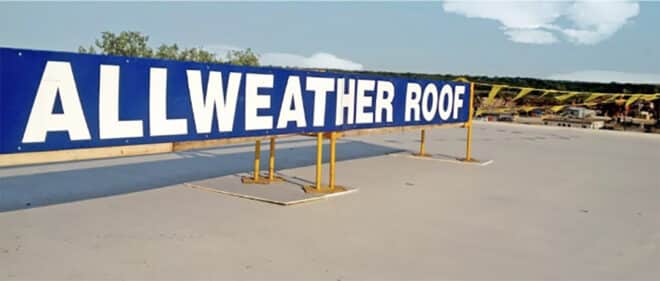
When it comes to securing your commercial roof in the unpredictable weather conditions of Minnesota, Allweather Roof is your expert partner of choice. With our extensive knowledge and experience in installing both PVC and PVC-KEE roofing, we stand at the forefront of delivering exceptional roofing solutions for your business. Don’t compromise of the safety and integrity of your commercial building – trust Allweather Roof to provide you with a reliable, long-lasting, and low-maintenance roofing solution!
Contact us today to schedule a consultation and take the first step towards securing your commercial property with the best in the industry. Let us protect your business, so you can focus on what truly matters.

